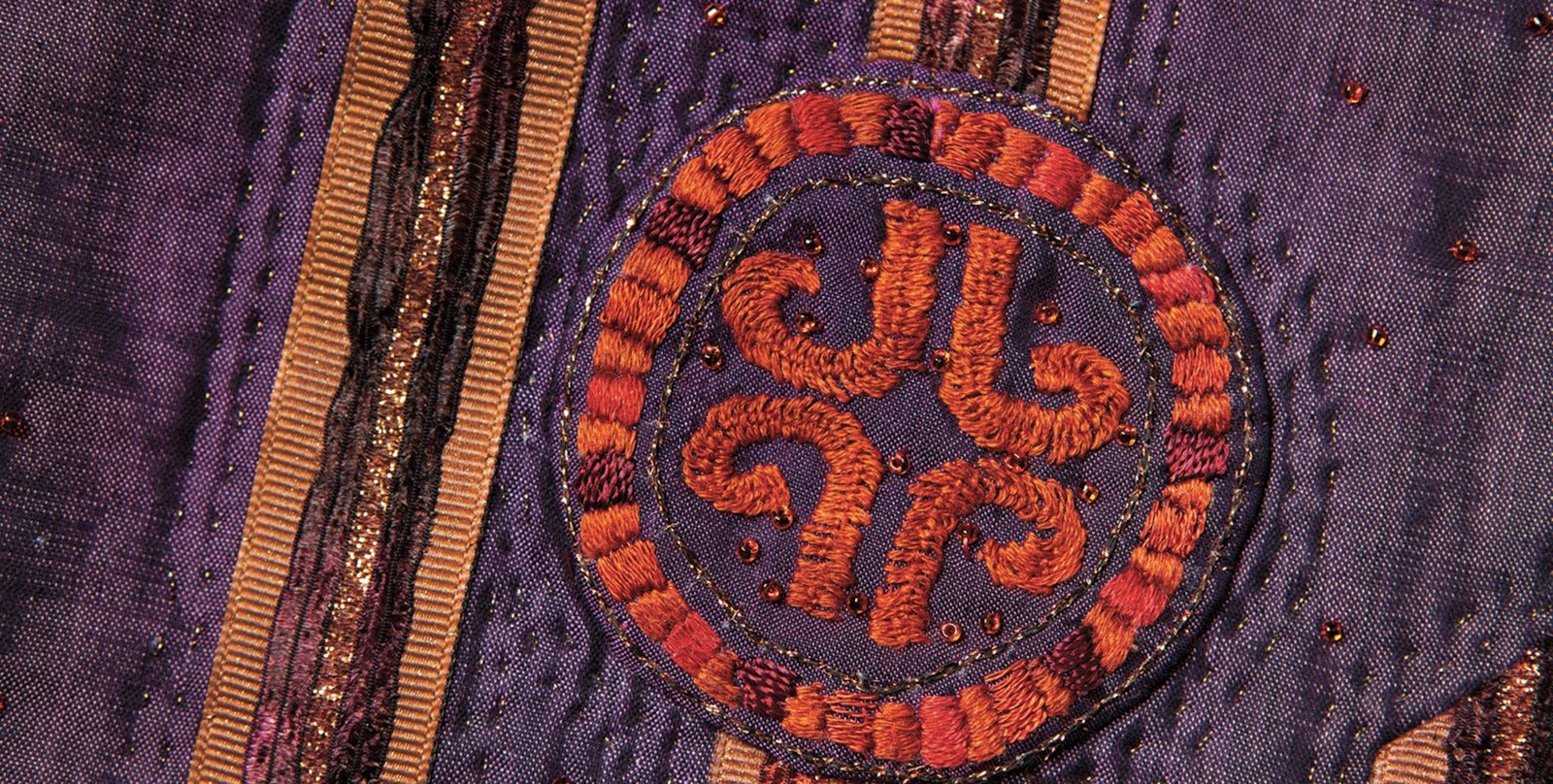We ve all heard of writer's block but how many of us sometimes suffer from weaver's block, overwhelmed by all the choices and dimensions of a possible project? Here's Karen Donde to tell us about sage advice from Anita Luvera Mayer, one of the most creative and prolific weavers I know. —Anita Osterhaug
The most valuable lesson I learned in journalism school was to get my fingers on the typewriter keys and just start putting words on paper. The first words I write do not have to be the perfect ones. In fact, I may not find the story’s actual beginning until I have written five to six paragraphs or more. I learned that is OK, because the act of typing words onto paper or a computer screen allows my mind to begin shaping the story I want to tell. Only the blank page is intimidating. Once the words are in front of me, they can always be moved around or changed.
The same is true of design. The pressure to create a beautiful handwoven garment, scarf, or tablecloth from scratch with only a vague idea what it should look like can be paralyzing. In trying to see the finished product, it’s easy to get overwhelmed by the many elements involved in combining fibers, yarns, textures, colors, embellishments, pattern, and weave structures into a successful finished cloth.
Anita Luvera Mayer has some excellent advice for those scary moments: do something. . . anything. Pull weeds, run the vacuum, sew the buttons on something in your basket of unfinished projects, take a shower. It doesn’t matter what, because simply putting your body in motion allows you to access the part of your brain that has creative thoughts.
“When my hands are involved, my mind engages,” she says while explaining her creative process in her excellent video Creative Cloth: Designing and Embellishing Handwoven Fabric. Anita says she always has three garments at three different stages going at once: one at the design stage, one at the making stage, and one at the finishing stage.
As she is involved in the making of one garment, she continues to think about the garment in the design stage, jotting down ideas or sketches in a dedicated project book as she works. When she is relaxing at the end of the day, she picks up the project in the finishing stage, which usually requires rather mindless hand work. That activity helps her mind think creatively about the other two projects.
Watching her video is like stepping into Anita’s personal studio for a private workshop, and the timing couldn’t have been better. When the video came out, I was about to spend the next three months creating exhibit pieces for the Haywood Community College Professional Crafts graduate show at the Folk Art Center on the Blue Ridge Parkway in Asheville. After seeing Anita’s extensive design and project notebooks and hearing about her personal approach to design, I found myself channeling that former News Ed professor: Just get something on paper.
Since I began teaching weaving, I have always explained to my students the value of accurate record-keeping and “designing with intention” versus “by the seat of the pants.” However, I’ll admit I don’t always follow my own advice. My Haywood instructors required me to maintain detailed records, but my quest for the perfect organizational “system” has yet to magically install itself on my laptop, complete with a three-step tutorial for slow technology adopters. Notebooks I understand, and while I’ve been introduced to this idea before, Anita makes it all sound more approachable. So I am resolved to give Anita’s multiple notebook system a try.
However, I do not want to mislead you into thinking that is all you’ll get from Anita’s video. This is a two-disc set that opens with Anita’s philosophy toward designing handwoven and/or hand-embellished garments in simple, unfitted shapes to wear over what she calls her “uniforms.” I was surprised to learn that as many garments as Anita has created in her 40-year career, for exhibition, teaching, or her own wardrobe, she has used only six basic patterns. It is what she does to create and embellish the cloth that makes each one special.
The bonuses in this video are Anita’s detailed instructions for creating many of the embellishments that have become her signature. She shows how to manipulate color through discharge, bleeding tissue, and fabric paint. She demonstrates how to create applied embellishments with crochet cording, stacked beads, and wrapped rings. She even explains her penchant for turning inexpensive finds from second-hand stores into unique garment patterns or accessories
I have not yet had the opportunity to meet Anita Luvera Mayer in person or take one of her workshops. However, I have admired her exhibit garments at Convergence and frequently pull out her book, Clothing From the Hands that Weave, whenever I am in need of inspiration. In fact, I’ve included a photo of my take on her Portuguese Shepherd’s Coat that I made last summer.
One of these days I hope to sit down with Anita Luvera Mayer over a cup of tea and share some of her ideas and experiences. You’ve got to love someone who describes herself as “a woman of 79 still out to conquer the world.”
But first, I have to go buy some new notebooks.

